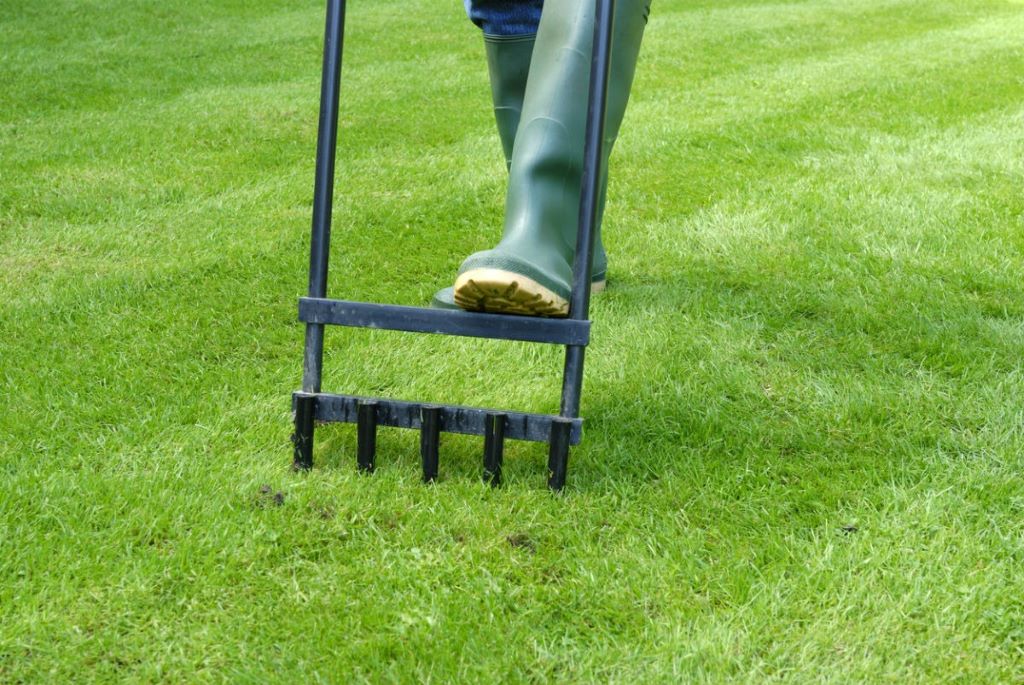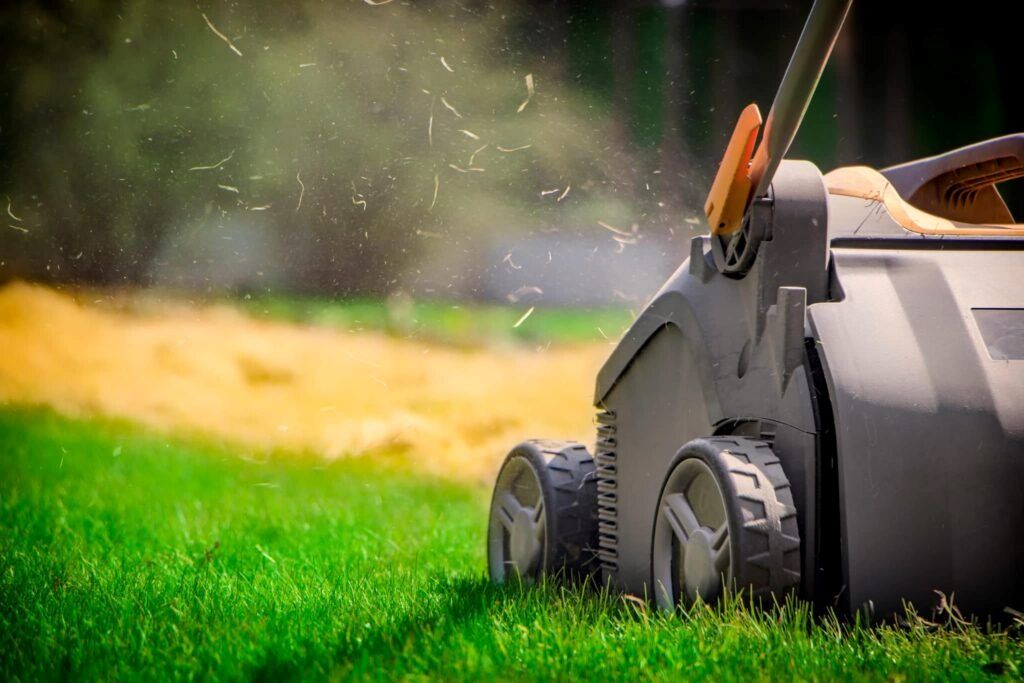When to Aerate Your Lawn for a Lush, Healthy Yard

Imagine stepping onto your lawn and feeling a soft, vibrant carpet of grass beneath your feet. A healthy lawn doesn’t just happen—it takes effort, and aeration is one of the most effective ways to ensure your yard thrives. But when is the best time to aerate your lawn? Timing is everything, and aerating at the wrong time can do more harm than good. In this comprehensive guide, we’ll explore the optimal times to aerate your lawn, why it matters, and how to do it right to achieve a lush, green yard that’s the envy of the neighborhood.
What Is Lawn Aeration and Why Does It Matter?
Lawn aeration involves perforating the soil with small holes to allow air, water, and nutrients to penetrate deeper into the root zone. Over time, soil can become compacted due to foot traffic, heavy equipment, or natural settling, which restricts root growth and reduces grass vitality. Aeration alleviates this compaction, promoting healthier grass and improving overall lawn health.
Aerating your lawn offers several benefits:
- Improved nutrient absorption: Roots gain better access to fertilizers and water.
- Enhanced root growth: Looser soil encourages deeper, stronger roots.
- Better drainage: Prevents water pooling and reduces runoff.
- Reduced thatch buildup: Helps break down excess organic matter that can choke grass.
Understanding when to aerate is key to maximizing these benefits, as timing depends on factors like grass type, climate, and soil conditions.
When Is the Best Time to Aerate Your Lawn?
The ideal time to aerate your lawn depends on the type of grass you have—cool-season or warm-season—and your local climate. Aerating during the grass’s active growing period ensures it recovers quickly and fills in the holes created by aeration. Let’s break it down.
Cool-Season Grasses: Spring and Fall Are Prime
Cool-season grasses, such as Kentucky bluegrass, fescue, and ryegrass, thrive in cooler temperatures and are common in northern regions. The best time to aerate these lawns is:
- Early Fall (August to September): Fall is the sweet spot for cool-season grasses. The cooler temperatures and increased moisture create ideal conditions for grass to recover and grow vigorously. Aerating in early fall also prepares your lawn for overseeding, as the holes allow seeds to settle into the soil.
- Early Spring (March to April): Spring is another good time, especially if your lawn shows signs of compaction or poor growth. However, avoid aerating too early when the soil is still wet from snowmelt, as this can worsen compaction.
Avoid aerating cool-season grasses during the hot summer months, as heat stress can slow recovery and damage the grass.
Warm-Season Grasses: Late Spring to Early Summer
Warm-season grasses, like Bermuda, Zoysia, and St. Augustine, flourish in warmer climates and are common in southern regions. The best time to aerate these lawns is:
- Late Spring to Early Summer (May to June): This is when warm-season grasses enter their peak growing season. Aerating during this period allows the grass to recover quickly and take advantage of warmer temperatures and longer daylight hours.
- Avoid Fall Aeration: Unlike cool-season grasses, warm-season varieties slow their growth in fall as they prepare for dormancy. Aerating in late fall or winter can stress the grass and lead to patchy recovery.
Regional and Climate Considerations
Your local climate plays a significant role in aeration timing. For example:
- In regions with harsh winters, prioritize fall aeration for cool-season grasses to strengthen roots before dormancy.
- In areas with mild winters, spring aeration may be more effective to kickstart growth.
- In hot, arid climates, ensure your lawn is well-watered before and after aeration to prevent drought stress.
Check your local weather patterns and aim to aerate when temperatures align with your grass type’s growth cycle. Avoid aerating during extreme heat, drought, or heavy rain, as these conditions can hinder recovery.

Signs Your Lawn Needs Aeration
Not sure if your lawn needs aeration? Look for these telltale signs:
- Compacted soil: If your lawn feels hard underfoot or water pools after rain, compaction is likely the culprit.
- Thinning grass: Sparse or patchy grass may indicate poor root access to nutrients.
- Excessive thatch: A thatch layer thicker than half an inch can block air and water.
- Heavy foot traffic: Lawns used for play or frequent gatherings often become compacted.
If you notice these issues, it’s time to aerate, but always align the process with the optimal season for your grass type.
How Often Should You Aerate Your Lawn?
The frequency of aeration depends on your lawn’s condition and usage:
- High-traffic lawns: Aerate annually, especially if your yard sees heavy foot traffic or vehicle use.
- Clay soils: These compact easily and may need aeration once or twice a year.
- Healthy lawns: Aerating every 1-2 years is often sufficient for well-maintained lawns with loamy soil.
Over-aerating can stress your lawn, so assess its condition before scheduling. A soil test can also help determine compaction levels and nutrient needs, guiding your aeration schedule.
How to Aerate Your Lawn: Tips for Success
Aeration is most effective when done correctly. Here’s a step-by-step guide to ensure you get it right:
- Choose the Right Equipment:
- Core aerators: These machines remove small plugs of soil and are ideal for most lawns. Rent one from a local garden center or hire a professional.
- Spike aerators: These poke holes in the soil but may cause surface compaction. Use them only for lightly compacted lawns.
- Prepare Your Lawn:
- Mow the grass to a shorter height to make aeration easier.
- Water the lawn 1-2 days before aerating to soften the soil, but avoid overly wet conditions.
- Mark irrigation heads or obstacles to avoid damaging equipment.
- Aerate Properly:
- Pass the aerator over the lawn in a crisscross pattern to ensure even coverage.
- Focus on high-traffic areas but cover the entire lawn for consistent results.
- Leave the soil plugs on the lawn—they’ll break down naturally and enrich the soil.
- Follow Up with Care:
- Overseed immediately after aeration to promote new grass growth.
- Apply a starter fertilizer to boost nutrient uptake.
- Water the lawn lightly but consistently for the next few weeks to aid recovery.
Common Mistakes to Avoid
Aerating seems straightforward, but mistakes can reduce its effectiveness:
- Aerating at the wrong time: Timing is critical—stick to the active growing season for your grass type.
- Aerating wet or dry soil: Overly wet soil can clog aerators, while dry soil is harder to penetrate.
- Skipping post-aeration care: Without overseeding or fertilizing, you may miss out on aeration’s full benefits.
- Using the wrong equipment: Spike aerators are less effective than core aerators for heavily compacted soil.
Additional Lawn Care Tips for a Thriving Yard
Aeration is just one part of a healthy lawn care routine. To maximize your lawn’s potential:
- Fertilize strategically: Use a balanced fertilizer after aeration to nourish roots.
- Mow correctly: Keep blades sharp and avoid cutting grass too short to prevent stress.
- Water wisely: Provide 1-1.5 inches of water per week, preferably in the early morning.
- Control weeds: Apply pre-emergent herbicides in spring or fall to prevent weed growth.
By combining aeration with these practices, you’ll create a lawn that’s not only healthy but also visually stunning.
FAQs About Lawn Aeration
Q: Can I aerate my lawn in summer?
A: Summer aeration is generally not recommended, especially for cool-season grasses, as heat stress can slow recovery. Warm-season grasses may tolerate late spring or early summer aeration.
Q: How long does it take for a lawn to recover after aeration?
A: With proper care, most lawns recover within 2-4 weeks. Watering and fertilizing can speed up the process.
Q: Do I need to hire a professional for aeration?
A: While DIY aeration is possible with rented equipment, professionals can ensure even coverage and handle larger lawns efficiently.
Q: Can aeration help with weeds?
A: Aeration improves grass health, which can outcompete weeds, but it’s not a direct weed control method. Combine it with proper weed management for best results.
Conclusion: Take the First Step Toward a Healthier Lawn
Aerating your lawn at the right time can transform your yard from lackluster to lush. By timing aeration to your grass type’s growing season—fall or spring for cool-season grasses, late spring to early summer for warm-season varieties—you’ll set the stage for stronger roots, better nutrient uptake, and a vibrant lawn. Avoid common pitfalls, follow up with proper care, and complement aeration with a solid lawn maintenance routine for lasting results.
Related Topics:



